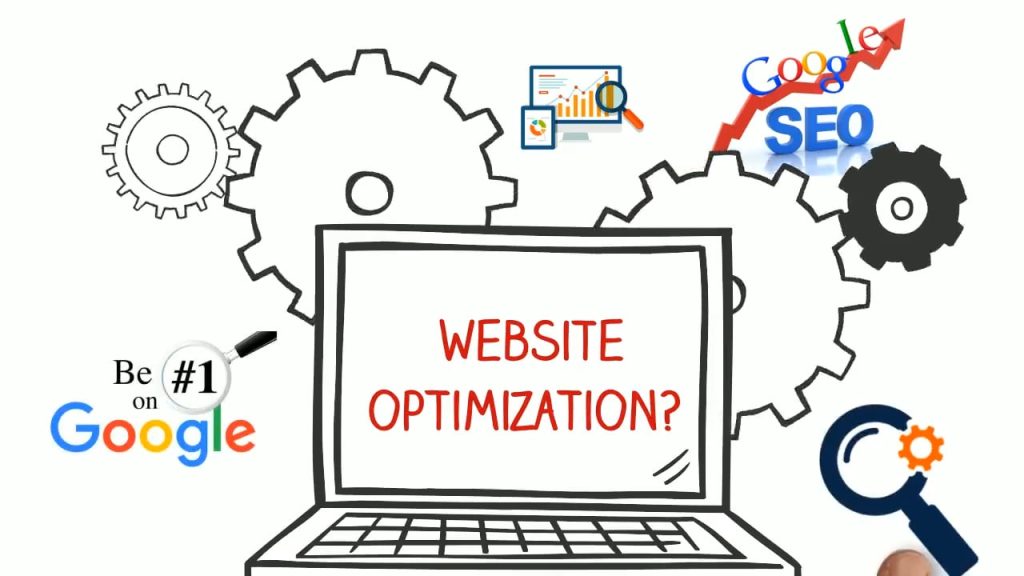
Want to show up more in AI overviews? Discover proven optimization tactics to increase your website’s visibility and reach more potential customers.
AI Overviews optimization is essential – times are changing, and without it, your website traffic could plummet. Perhaps you’re already seeing some signs. A 10% decrease in traffic since the same time last year, or lower rankings for keywords you’d previously owned the top position for over the last several years.
You aren’t alone. Infiknowledge studied 5,000 websites across various industries to better understand how the AI Revolution is impacting website traffic. It found that on average, these websites saw a 47% decrease in organic traffic between January 2024 and July 2025. That loss in website traffic resulted in a 32% decrease in lead generation and sales from organic search. But the trend isn’t just impacting organic search. It also led to a 41% increase in cost-per-acquisition for online ads because the competition is increasing as companies look for ways to generate those now-missing leads from organic search.
Whether you’re seeing these staggering changes to your website or only just starting to sound the alarm that something needs to change, what you should be doing is optimizing for LLM. Read on to learn what that entails and the secret ingredient our team has found and how we’re still driving meaningful traffic to client websites despite this shift.
Another staggering statistic from the Infiknowledge study is that 60% of searches now result in zero clicks. That’s because the searcher is getting everything they need from the AI response or AI overview.
The bright spot in all of this is that for brands that have shifted their strategies, website traffic from AI has grown 9.7 times what it was this same time last year.
You know you need to make a change, but aren’t quite sure what. We’ll explain how large language models (LLMs) are shifting website optimization strategies and how you can avoid being left behind.
Instead of optimizing for keywords, brands must shift and instead focus on these key areas of their content.
Aim to clearly answer the question within the first 50-100 words. You can expand upon the answer beyond that word count, but should start your answer with a complete thought.
Within your headings, start off with words like “what is” and “how to.”
The challenge with this advice is that it requires more technical expertise and not just a good content writer. But using markup for FAQs and HowTos will make your content more AI-friendly and be worth the investment of hiring a more technical optimization expert.
Your content should sound relaxed and friendly. The less jargon and complex language, the better. Conversational language will cater to LLM-style queries more effectively than marketing content will.
AI answer engines want to display content that best meets the user’s needs and is formatted best for the query. To meet this requirement, you should use short paragraphs, include bulleted and numbered lists, place complex content in tables and design engaging infographics when you can. This will increase your chances of getting picked for AI answer engines.
The concept of E-E-A-T (Expertise, Experience, Authoritativeness and Trustworthiness) is not new. Google has been using it for many years in its algorithms to determine what content to rank high and display to its customers.
LLMs are using this metric as well. You should interlink your content clusters to show depth and credibility on a topic. If you can, develop your own research on a topic that others will want to interlink to, which will further display your authority and trustworthiness on a topic.
Many e-commerce sites rely heavily on getting a customer to their site to view their beautiful images of their products. But images will play less of a role in getting customers to the site now due to the rise of LLM.
Instead, businesses must improve their product descriptions. No more will a one-line description alongside 10 images sell a product. You need rich, intent based product descriptions and multimodal content.
That’s not to say you should get rid of all those pretty images. AI will use those images alongside the descriptions to understand your products and return results to its customers.
Now to the major element we’re finding to be a success with our customers in the LLM-era.
Our customers span many industries and types from travel to construction. Yet this strategy is working for all of them.
To establish the brand’s authority on the topic, we’re engaging in PR services. This includes ensuring effective product listings on sites like clutch.co and placing guest posts on reputable websites within the brand’s industry.
Basically, the more publishers mention your brand, the more likely LLMs will feature that brand in their AI responses.
PR is more valuable than ever as website traffic shifts from search engines to LLMs. Since LLMs generate narrative-based responses instead of ranked lists, brand mentions offer context and display authority in a more impactful way than backlinks alone.
The way PR Week puts it, is that optimization is out; influence is in. It goes on to explain that earned media is essential to success. And while other brands were seeing a decrease in website traffic, PR Week helped a client increase their website traffic by 236% year-over-year with earned media.
But they aren’t the only ones talking about the power of earned media and PR. Search Engine Land said that building domain authority is no longer a major metric. Instead, you’re building subject-matter authority and showcasing that your answer is the best answer to a query. Now those mentions on third-party websites must: “Associate your brand with key topics and attributes in ways AI can easily ingest, understand, and reference,” says Search Engine Land.
In that research, they found that 61% of the signals that AI uses to understand a brand and its reputation come from editorial media sources. And consistency in how you’re mentioned matters too. If AI is seeing frequent messages about your brand across PR mentions, it will better associate your brand with those tenets.
When building earned mentions, you have to be careful and thoughtful about where those mentions come from. Their authority in the industry matters greatly when looking to build clout with LLMs.
The most valuable mentions from a PR standpoint are those that come from trade publications and news outlets. These are far better than brand blogs.
Plus, you want the mentions to be consistent and associate your brand with the same expertise across the various sites. Wikidata and schema.org markup will further get AI systems to recognize the brand and display it in responses.
Targeting earned media requires dedicating time to it. You can’t just call up news sources or send out announcements and hope for the best. Instead, focus on these PR strategies, or hire an expert to help identify and maximize each opportunity that comes your way.
PR and optimization teams cannot operate in a silo. They must collaborate on topics, messaging and the audience you’re targeting. Better yet, your PR team should be an expert in optimization to better identify opportunities and maximize them by getting just the right soundbite placed with an opportunity.
Third-party linking and mentions have always focused more on quality than quantity from optimization experts. But the standard is rising further. You want to earn mentions from the pinnacles in your industry. This builds authority with both your customers and AI engines to make you the go-to brand in your area of expertise.
Avoid jumping around from one topic to another in your earned media. Pick one and secure coverage around that core area of expertise. While your business might offer many services and have expertise in a variety of areas, you want to showcase to AI the main idea of what you offer and what makes you so good at it.
If you want to be the go-to expert on a topic, you need to be quotable. That means creating unique insights, developing data points that no one else has and drafting thoughtful quotes that make you the sought-after expert in your field. This will make journalists and bloggers want to cite you as the expert because you make their articles interesting and engaging to their audience. Likewise, AI will find that unique data worth including in its responses.
A prime opportunity for optimizing your earned media is to look at your Wikipedia page, if you have one, or your mentions within a larger Wikipedia page. Ensure you are well represented there and earn a place on more pages, when possible.

With the rise in earned media through well-respected industry publications, some brands are left wondering whether guest posts are still effective. The answer is yes, but like everything else, they have to be very strategic.
Guest posts still build high-quality backlinks and showcase authority in this time of transition where SEO still drives some traffic, but you’re also working to train LLMs on your expertise.
The great irony of today’s optimization is that many brands are using AI to generate their content, meaning they won’t rank for AI overviews. This leaves the door open for strategic brands to draft authentic expert-written guest posts to further display authority and make their way into AI responses while other brands are taking the easy way out and developing their content with AI.
We used to think of guest posts as an SEO tool. But now, when placed in the right locations and covering quality topics, they help build:
Instead of seeking backlinks on popular sites and articles, you want your brand and its experts drafting full-length, deep articles that third-party sites publish.
The key to making guest posts work for you is in:
PR can no longer be an afterthought for brands. Earned media is changing the way LLMs view brands, and you don’t want to be scrambling to catch up as search engines drive less traffic to your site.Don’t wait until your leads and sales decrease drastically to start taking your AI optimization and earned media seriously. Let’s chat and allow our team to show you how we’re having a meaningful impact for our clients and helping them adapt their online strategies to meet customers where they’re at.
Further reading: